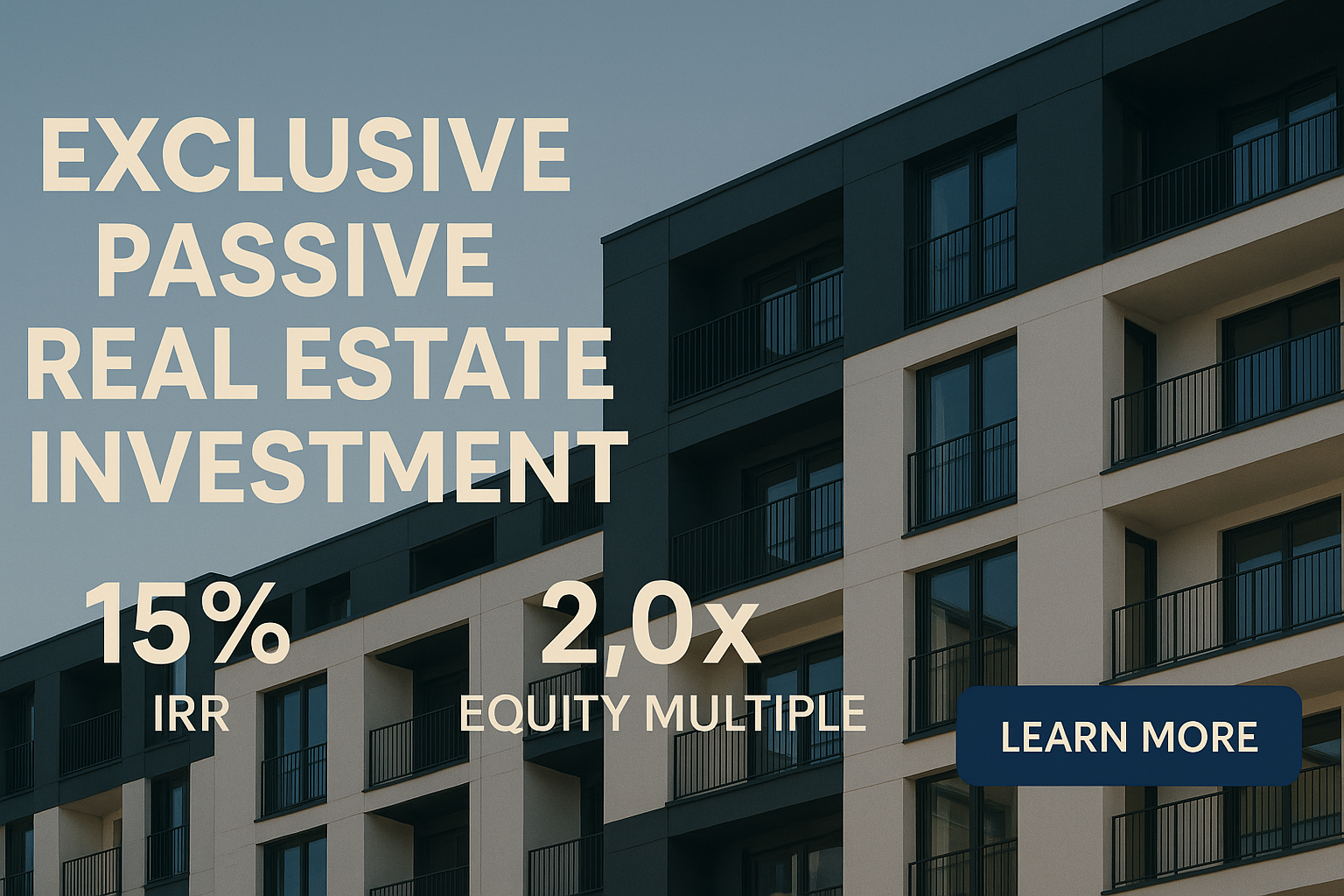
How to Spot Red Flags in Private Real Estate Deals: 10 Risks Every Investor Should Know
By Fuquan Bilal
Never miss an Invest Clearly Insights article
Subscribe to our newsletter today
Private real estate investing has become an attractive way to build wealth, diversify portfolios, and generate income. According to Preqin’s 2024 Real Estate Report, assets under management (AUM) in private real estate funds exceeded $1.5 trillion globally, reflecting increasing investor demand.
Yet, rapid growth also attracts bad actors. The SEC reported that investment scams cost Americans more than $5.7 billion in 2024, with many cases tied to private offerings (like real estate syndications) lacking oversight. In these market conditions, with the potential for big wins and big losses, protecting capital requires more than optimism; it requires disciplined due diligence.
Here are ten critical red flags every investor should be able to identify before committing funds to a real estate deal.
1. Promises of Guaranteed or Unrealistic Returns
Every investment carries risk. When sponsors use terms like “guaranteed” or “risk-free,” it should immediately raise concerns. Historical data show of private real estate is difficult to determine, as most are not publicly reported. However, Bluerock states an average of 9.3%-13.2%. If a deal promises 25–30% annualized returns with no downside, the projections are likely unrealistic or misleading.
The best way to test assumptions is to ask how the sponsor underwrote the deal. Were conservative rent growth and expense estimates used? If the numbers depend on best-case scenarios (not “base-case”), the returns may not be sustainable.

2. High-Pressure Sales Tactics
Legitimate investment opportunities allow investors time to complete proper due diligence. If you are urged to “act now” or told the deal will disappear within hours, it is a classic pressure tactic. A 2022 FINRA survey found that nearly half of fraud victims reported being pressured to invest quickly.
The right sponsor will respect the investor’s process and timeline. If urgency is used to discourage questions or prevent you from requesting documents, step away.
3. Lack of Transparency
Transparency is one of the most important indicators of credibility. Reputable sponsors provide detailed offering memorandums, financial models, and third-party reports such as appraisals and property condition assessments.
In contrast, evasive answers, incomplete documents, or reluctance to provide supporting information are warning signs. The SEC has pursued multiple cases where sponsors raised millions while withholding key details and avoiding independent oversight. Investors should always request financial statements and ask whether the fund undergoes regular audits.
4. Unregistered Investments or Unlicensed Operators
Most private offerings must comply with SEC exemptions, such as Regulation D 506(b) or 506(c). If a sponsor cannot clearly explain which exemption applies, or if they are unlicensed, it should raise serious concerns.
Simple background checks through FINRA Broker Check or state securities regulators can confirm whether an operator has the required credentials. Skipping this step could expose investors to unnecessary legal and financial risk.
5. Overly Complex Structures
Some structures are intentionally complex to obscure fees, risks, or performance. If you cannot explain to a peer how the investment generates returns, the complexity may not be justified.
For example, in 2020, a Ponzi scheme disguised as a multi-layered real estate development fund collapsed after raising more than $140 million. Many investors admitted they never fully understood the structure.
When reviewing an offering, ask the sponsor to walk through the mechanics in plain English. If clarity is lacking, that in itself is a red flag.
6. “Exclusive Insider” Opportunities
Deals marketed as “exclusive” or “only for a select few” should be approached carefully. Exclusivity can sound appealing, but secrecy often hides flaws. According to the Federal Trade Commission’s 2023 report on investment scams, “exclusive insider access” was among the most common tactics used in affinity fraud cases.
Legitimate opportunities stand up to broad scrutiny. If secrecy is the primary selling point, investors should ask why.

7. No Independent Oversight
Independent oversight is a cornerstone of responsible fund management. Reputable sponsors engage custodians, third-party administrators, or independent auditors. When oversight is absent, investors are left relying solely on the sponsor’s reporting.
In 2023, the SEC brought enforcement actions against a real estate operator managing more than $50 million without independent custodianship, citing it as a key vulnerability that placed investor funds at risk.
Before investing, confirm who holds the funds, who audits performance, and what independent checks are in place.
8. Poor or Inconsistent Communication
Communication practices often reflect operational discipline. Inconsistent or vague updates can signal disorganization or intentional avoidance. Deloitte’s 2024 investor survey found that 72% of limited partners expect quarterly reporting that includes financial metrics and market commentary.
Review sample investor updates if possible. Strong sponsors provide timely, data-backed reporting with clear insights on occupancy, debt service, and cash flow.
9. Returns Out of Step with Market Reality
Projections that deviate too far from market benchmarks deserve scrutiny. If a pro forma assumes 10% annual rent growth in a market averaging 3%, the assumptions are not credible.
In 2024, U.S. multifamily rent growth averaged just 2.1% according to Yardi Matrix. Sponsors projecting significantly higher numbers must be able to support them with data, market studies, or a unique operational strategy. Otherwise, the return profile is inflated.
10. Emotional Appeals Over Data
Fraudulent operators often appeal to emotions rather than numbers, promising financial freedom, playing on fear of missing out, or using personal stories to create urgency. A 2022 AARP study found that 62% of fraud victims said emotional appeals influenced their decision to invest.
Sound investments should be grounded in data, third-party research, and transparent analysis, not emotional manipulation.
Conclusion
Private real estate can be an excellent tool for long-term wealth creation, but capital must be protected through careful due diligence. By recognizing these ten red flags unrealistic returns, pressure tactics, lack of transparency, unregistered operators, overly complex structures, exclusive offers, lack of oversight, inconsistent communication, unrealistic projections, and emotional manipulation investors can better separate credible opportunities from those that pose unnecessary risk.
The strongest sponsors welcome tough questions, provide independent verification, and maintain open communication with their investors. Protecting capital is not just about finding great opportunities, it is also about avoiding the wrong ones.
Written by
Fuquan BilalFuquan Bilal is a real estate professional with over 26 years of expertise in residential and commercial investments. He has successfully managed more than $60 million in private funds, specializing in identifying undervalued assets and optimizing their performance to deliver returns for investors.
Read Our ReviewsOther Articles

Real Estate Recapitalizations—What Passive Investors Need to Know
A recapitalization is a restructuring of a property's capital stack (the mix of debt and equity that finances an investment). While they can be legitimate business strategies, transparency can be an issue.

How to Evaluate a Potential Investment Using the FUND Framework
The FUND framework is a simple way to evaluate opportunities by looking at four pillars: Financials, Underlying Assets, Notable Differentiator, and Delegation of Responsibilities.

What Needs to “Die” in Passive Investing – According to Guests of The Invest Clearly Podcast
Get the answer to the closeout questions of each podcast episode: “What do you think needs to die in passive investing?” The answers are wide-ranging, from misconceptions about risk, to misleading marketing tactics, to structural issues in how deals are presented.

Passive Real Estate Investing Advice from Experienced LP Investors
Experienced LPs shared their most valuable lessons, drawn from years of investing across various asset classes and sponsor relationships.

How Developers Mitigate Construction Risk to Protect Investors
Investing in multifamily development through a real estate syndication can be highly rewarding, but many passive investors wonder: What about construction risk? Delays, cost overruns, or unforeseen site conditions can feel intimidating if you’re new to the space.

The Passive Investor’s Guide to Ground-Up Multifamily Development
Ground-up multifamily development gives investors access to a proven asset class, long-term appreciation potential, and the ability to diversify outside of traditional stocks and bonds. This guide explains how the process works, why development is a strong choice for investors, the pros and cons to consider, and the steps to get started.